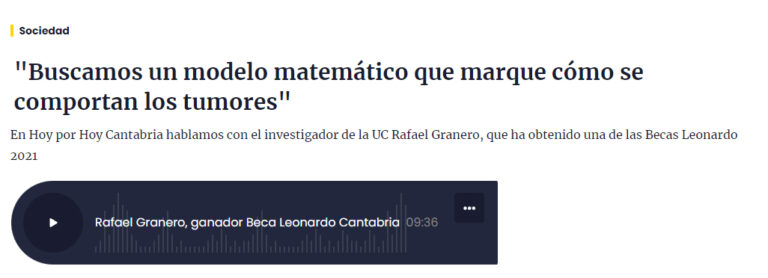DISSEMINATION
«Our task is not just to train more scientists but also to deepen public understanding of science.»
(The Skeptical Inquirer Vol. 14, Issue 3, Carl Sagan)
The approach to a multilayer tumour in vitro as a free boundary problem leads to the development of an asymptotic model that describes it.
The French engineer Henry Darcy derived, experimentally, what is known today as Darcy’s Law, which states that in certain units, the velocity is proportional to the pressure gradient of the fluid.
We usually think that a tumour starts with a small group of cells that are nourished by neighbouring cells. As they increase in number, the tumour grows, creating a certain geometry on which biological laws act, and what form do these laws take mathematically?
Antiogenesis plays a fundamental role in tumour growth, but do you know how it «works» mathematically speaking?
One of the 7 Problems of teh Millenium is to prove that the 3D incompressible Navier-Stokes equations have globally defined solutions, or to establish the existence of solutions that develop singularities.
It is the detective work of those of us who work with PDEs to know how a solution behaves even without knowing its expression.
There are three fundamental questions to ask when faced with a EDP
Many physical and biological phenomena are described using partial differential equations.
The domain is sometimes known, but what happens when the domain is an unknown?
The laws of water physics are the same in a glass of water and in seawater, but the behaviour of the fluid is very different.
There are asymptotic models that describe such phenomena well and are simpler.
We had a drink in the café of the Botín Center (Santander) to talk about the study of fluids through mathematics and how this study can affect one’s perception of art, especially painting.
We participated in the program ‘Hoy por hoy Cantabria’ of the SER radio station to talk about the Leonardo Grant from the BBVA Foundation and how our mathematical research can contribute to know a little more about the behavior of cancer cells.

